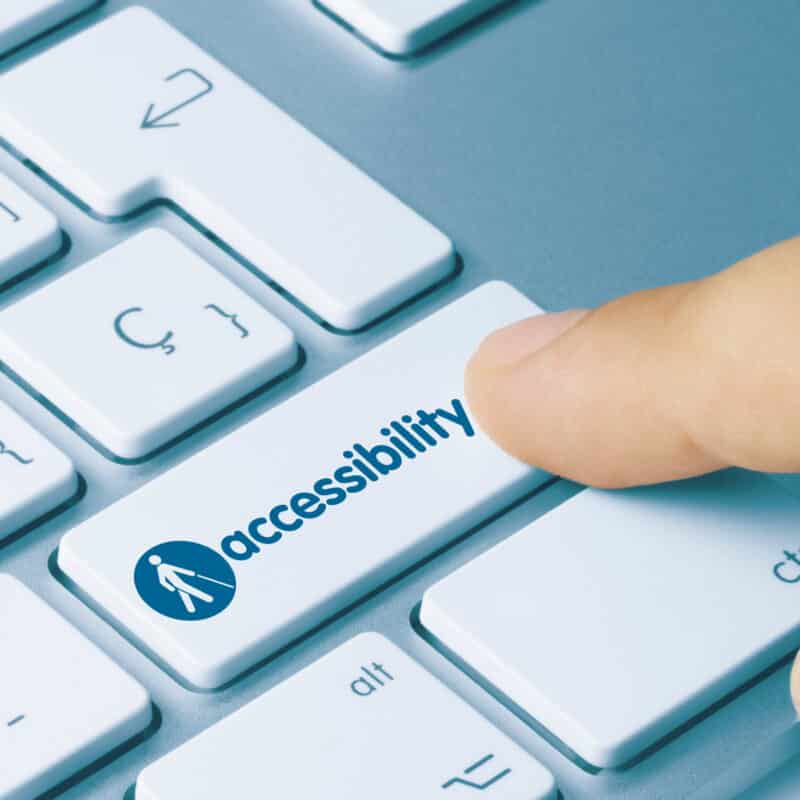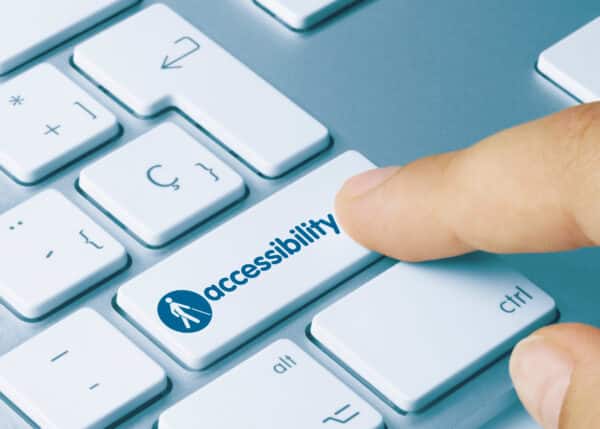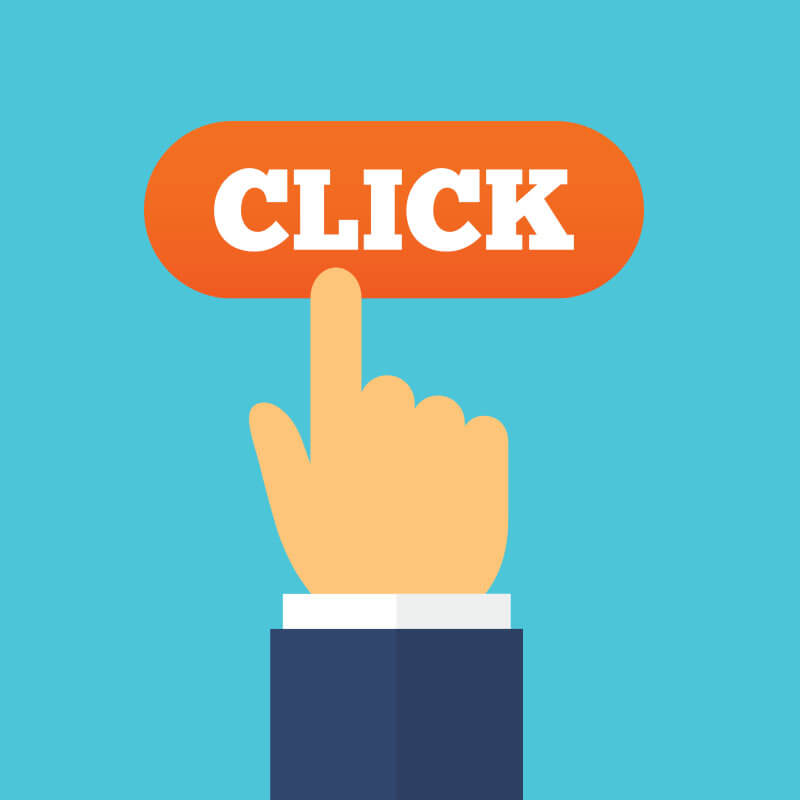What is an ADA compliant website?
An ADA compliant website is a website designed and built in such a way that it is accessible to those with disabilities who browse the web with assistive technology or adaptive devices. Some examples of assistive devices and technology include:
- Screen readers that read aloud web pages for people who cannot read the text
- Screen magnifiers for people with some types of low vision
- Voice recognition software and selection switches for people who cannot use a keyboard or mouse
What is the ADA?
ADA stands for Americans with Disabilities Act Standards for Accessible Design, a United States civil rights law passed in 1990 that prohibits discrimination against individuals with disabilities in all areas of public life. "Areas of public life" include schools, the workplace, transportation, and all public and private places that are open to the general public. The purpose of the law is to make sure that people with disabilities have the same rights and opportunities as everyone else.

Does the ADA apply to my business?
According to U.S. Equal Employment Opportunity Commission, the ADA applies to the following:
- All local, county, state, and federal government agencies.
- Any business that relies on the general public or for their benefit.
- Privately run companies that currently have 15 or more employees.
- Non-profit and charitable organizations which either have 15 or more employees or which operate for the benefit of the general public.
Even if ADA doesn’t apply to your company (for instance, if you employ 12 team members), making ADA compliance a part of your operations expands the audience you are able to reach. It's important to strive to provide everyone with the same experience and level of accessibility.
ADA vs. 508 vs. WCAG
ADA compliance is sometimes confused with 508 compliance or "WCAG standards". What is the difference?
Section 508
In 1998, Congress amended Section 508 of the Rehabilitation Act of 1973 to require Federal agencies to make their electronic and information technology (EIT) accessible to people with disabilities.
The ADA and Section 508 have the same goals, but Section 508 applies only to Federal government entities.
WCAG
The Web Content Accessibility Guidelines (WCAG) is a set of formal guidelines for websites that is used to improve accessibility. WCAG is not a law, but rather a set of standards.

Is my website ADA compliant?
If you haven't specifically spent time making your website ADA compliant, then it's a fair bet that it is not. You're not alone. For the last 3 years, the WebAim Million project conducted an annual accessibility analysis of the top 1,000,000 home pages. In 2021, 97.4% of home pages had detected WCAG 2 failures! This was down slightly from 98.1% in February 2020.
How can I check if my website is ADA compliant?
There are automated scans that can help detect some items. Keep in mind that only about 30% of issues can be detected by scanners. Using an automated scanner is a place to begin.
We use the WAVE accessibility checker for cursory accessibility checks. The WAVE scanner helps to identify things like:
- Color contrast errors
- Duplicate alternative text on images
- Skipped heading levels (non-semantic)
There are many other scanners available offered for free by companies that are trying to sell tools and services. However, think about it before you ask for a free instant accessibility report be emailed to you. It might be a terrible idea. In the event of a lawsuit, a report like this would likely be included in discovery and potentially used as evidence of your disregard of your website's accessibility issues.
Can I be sued if my website is not ADA compliant?
Breaking the Americans With Disabilities Act can carry fines by the federal government. If your business is subject to the ADA as mentioned above, affected parties may have grounds to file a civil lawsuit against your business.
While non-compliance with WCAG itself does not result in any direct penalties, organizations looking to make their websites compliant with the ADA should reference and follow WCAG 2.1 AA.
When it comes to ADA website compliance for private businesses, there are no federally codified rules. However, we know that the ADA does apply to websites based on cases such as:
- Gil v. Winn-Dixie (although this case was reversed on appeal in the 11th Circuit)
- NAD, et al, vs Netflix Complaint
- Maria Mendizabal v. Burger King Corp.
- Connor v. Parkwood Entertainment, LLC (Beyonce.com)
- Bishop v. Amazon.Com, Inc.
- Lucia Marett v. Five Guys Enterprises LLC
How do I make my website ADA compliant?
Manual Audit & Remediation
The path to full website accessibility is a two step process. The first step is a manual website audit by a reputable Accessibility company, and the second step is website remediation based on the audit results.
Please beware: There are no instant solutions to web accessibility and any super fast turnarounds (for example..."instant" or 48 hours) are suspect and likely worthless. Web accessibility is a process that involves a manual accessibility audit and actual editing of code and content review.
What if I can't afford a manual accessibility audit right now?
Take the steps you can to work toward web accessibility.
- Start by addressing the accessibility issues that are identified by automated scanners like WAVE. Some issues will be easy fixes and others may require working with your web designer/developer....and be prepared to be creative with your brand colors in order to achieve sufficient color contrast.
- Include an accessibility statement on your website that indicates you are working on your website accessibility and provides a way for someone to contact you about any issues they have encountered. (More on accessibility statements below)
- Make a plan to address the accessibility for any new content as it is added on your website to minimize issues going forward.
Accessibility Overlays Are Not the Answer
Please don't be tempted by accessibility overlay quick fixes.
Accessibility overlays do not make websites accessible, despite their claims to do so. This is made clear in the EyeBobs lawsuit involving an accessibility overlay. Like many, many thousands of websites, EyeBobs employed an accessibility overlay to try and mitigate their website accessibility issues. This did not protect them from a lawsuit, and actually provided more evidence from an expert witness, who wrote a 35-page blistering indictment about how inaccessible the Eyebobs’ website was -- despite using an accessibility overlay.
Accessibility overlays (also known as accessibility tools, plugins, and widgets) attempt to make websites accessible by adding an icon in the lower corner of the site that provides assistive technology for browsing a site.
However, these tools force users with disabilities to use the assistive technology provided by the overlay instead of the assistive technology that the user prefers and that is already customized to their unique needs. These overlays do not make websites accessible, and they can create other accessibility problems for users. They also do not protect companies from lawsuits as evidenced by more lawsuits being filed against companies using accessibility plugin/overlays.
Example of an Accessibility Overlay Making a Website Less Accessible
This video demonstrates how accessibility widgets (or overlays) duplicate assistive technologies that people already have set up in their browsers. This video shows how turning on the JAWS screen reader and trying to use a website equipped with an "accessibility widget" was a nightmare and rendered the site unusable.
Accessibility overlays....make them stop....seriously, overlays are not the answer. Read the Overlay Fact Sheet for more information on overlays.
Best Practice: Accessibility Statement On Your Site
Adding an accessibility statement to your site communicates that you are aware of and care about accessibility. It signals that you are attempting to address accessibility issues and are not clueless about accessibility.
An accessibility statement doesn't protect anyone from a lawsuit on its own, but it is reasonable to assume it may help deter a "drive-by" lawsuit (...in my layperson's opinion...and again, I'm not a lawyer). As long as you are actually trying to address accessibility issues and not just looking for cover, an accessibility statement on your website makes sense.
What is an ADA accessibility statement?
An ADA accessibility statement is a page on your website expressing your commitment to making your website content accessible to everyone regardless of how they browse the web.
According to the W3C, accessibility statements should contain at least the following:
- A commitment to accessibility for people with disabilities
- The accessibility standard applied, such as WCAG 2.1. In cases where you haven't conducted a thorough audit and remediation, and you know your site doesn't meet this standard yet, (but you are working toward it), then you would state your intent to meet the standard or that your website 'partially' complies.
- Contact information in case users encounter problems
The W3C also advises including the following information:
- Any known limitations, to avoid frustration of your users
- Measures taken by your organization to ensure accessibility
- Technical prerequisites, such as supported web browsers
- Environments in which the content has been tested to work
- References to applicable national or local laws and policies
To write our own accessibility statement, we used the W3 Accessibility Statement Generator as a starting point for creating it. Then we also referred to several articles written by experts on how to write and accessibility statement such as:
- How to write an accessibility statement
- Developing an accessibility statement
- Drafting ADA Accessible Statements for Websites
- Web Accessibility Policy Statements : Best Practices
We are still working on the accessibility of our website. Because web content is so dynamic, it's easy to fall out of compliance with each new piece of content added to a website....so it requires a constant awareness. To learn more about doing the best job we can to incorporate web accessibility into our web designs, I'm also currently completing the EdX Introduction to Web Accessibility course. I'm excited to share more about what I learn. 🙂



